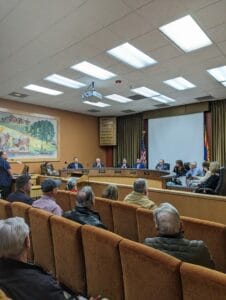By J.D. Tucille | Reason
This week, the U.S. Bureau of Reclamation, which manages federal water resources throughout the West, announced a water shortage at Lake Mead, the country’s largest reservoir, and resulting cuts in allocations to Arizona, Nevada, and Mexico. The announcement came even as parts of the West see massive monsoon rainfall resulting in washed-out roads and loss of life. It’s a testament to the extremes of life in the region, where water can be both a scarce resource and sometimes available in dangerous excess. That unpredictability makes a mockery of centralized management schemes for the wet stuff—but flexible rules and water markets offer a way to reduce both risk and waste of the valuable resource.
“Monsoon 2021 rainfall measured at Tucson International Airport set one of several records set this season with 5.88 inches of rain through July 25,” the Arizona Department of Water Resources announced at the end of July. “At Phoenix Sky Harbor International Airport, meanwhile, National Weather Service officials reported 1.67 inches for the month as of July 25, making 2021 the wettest July since 2013 and the 17th wettest on record.”
Unfortunately, that’s not enough all by itself.
“Fending off drought – especially the kind of long-running drought the Southwest has experienced – takes deep winter snowpack in the region’s mountainous watersheds. After more than two decades of dry conditions, it would take several consecutive years of deep snowpack to release from drought’s grip,” the department added.






